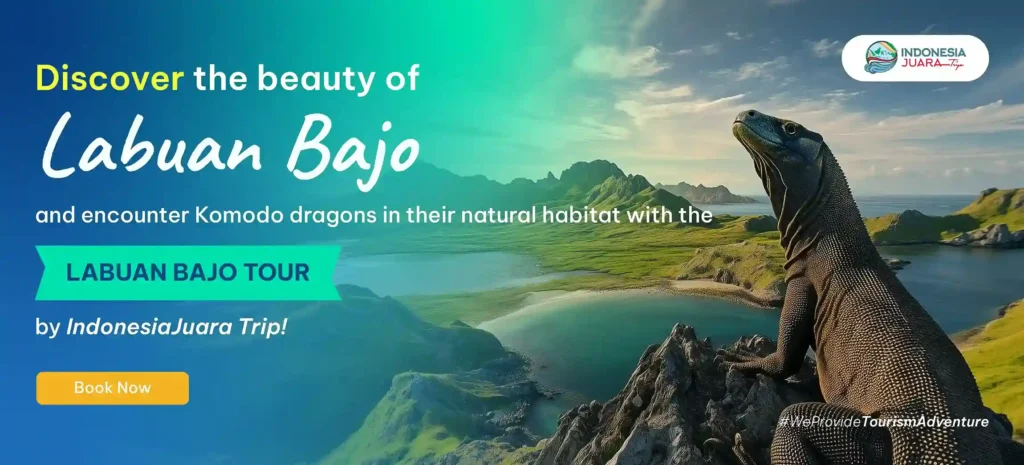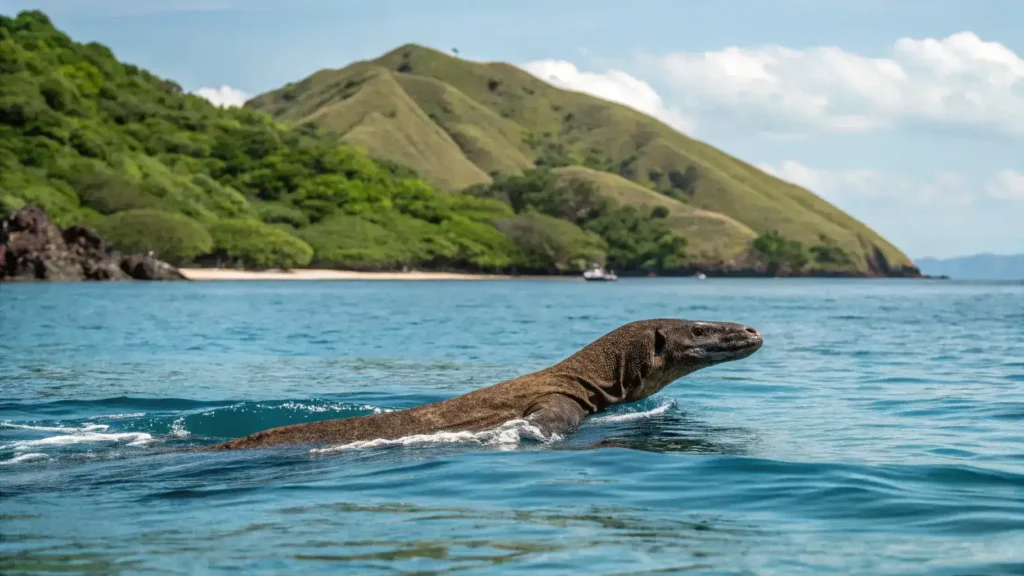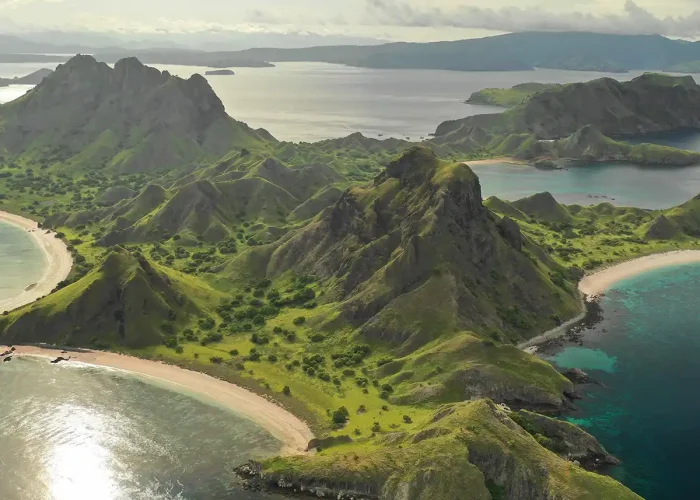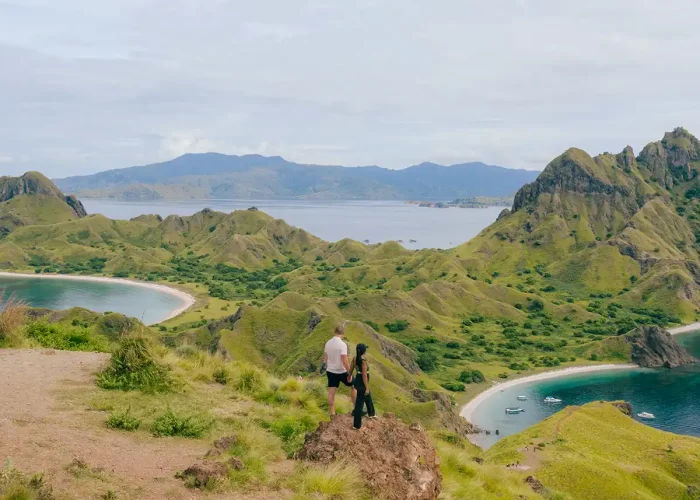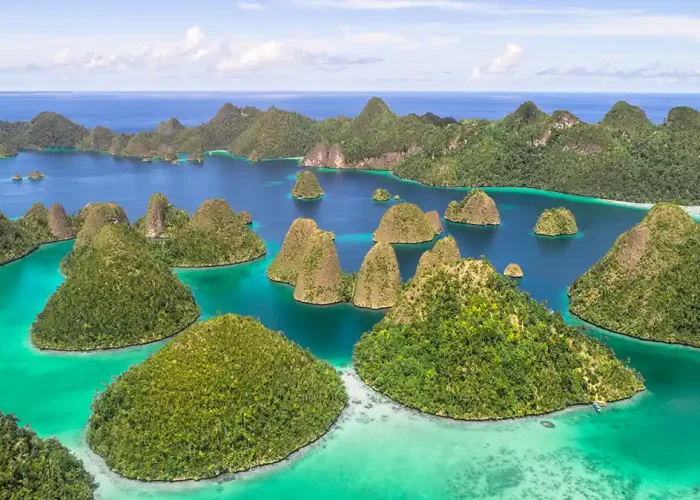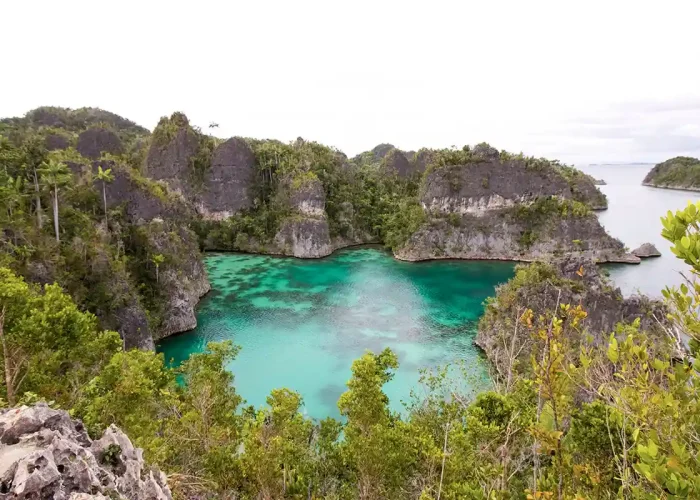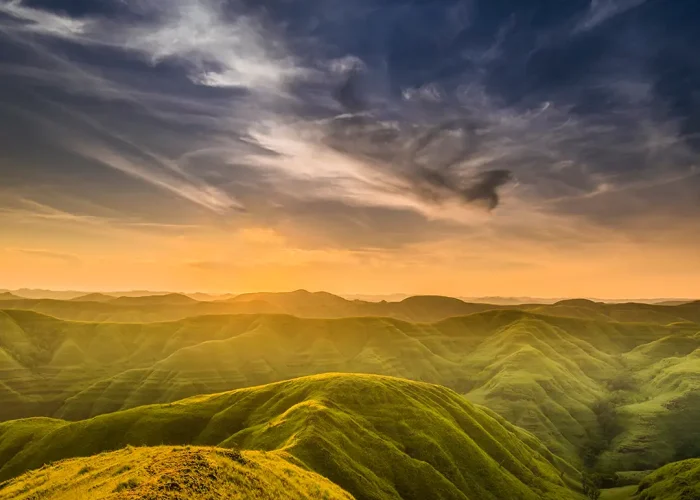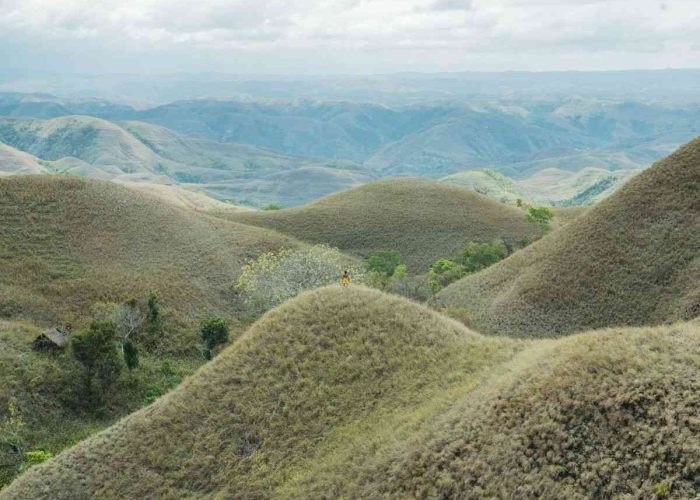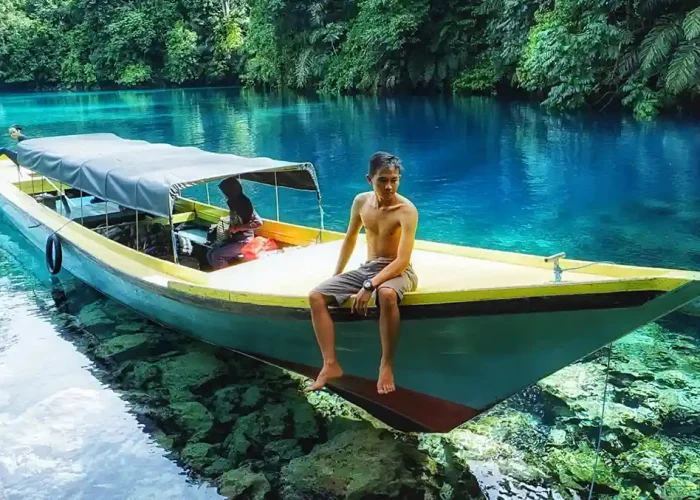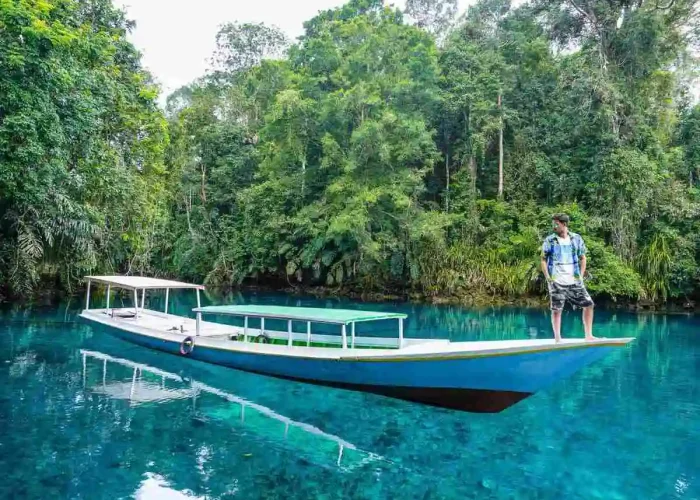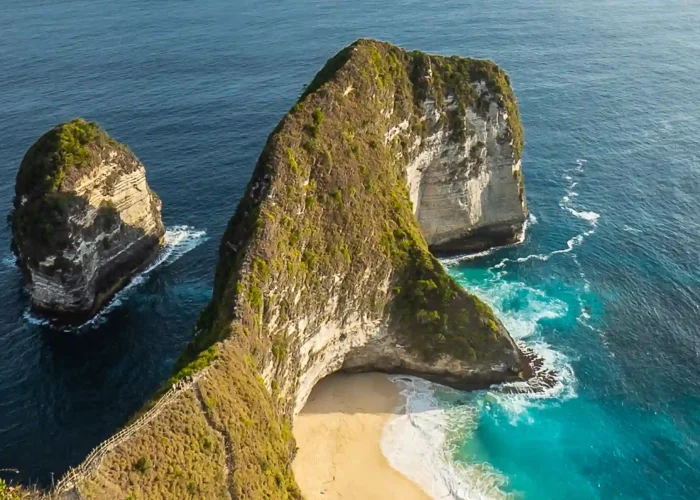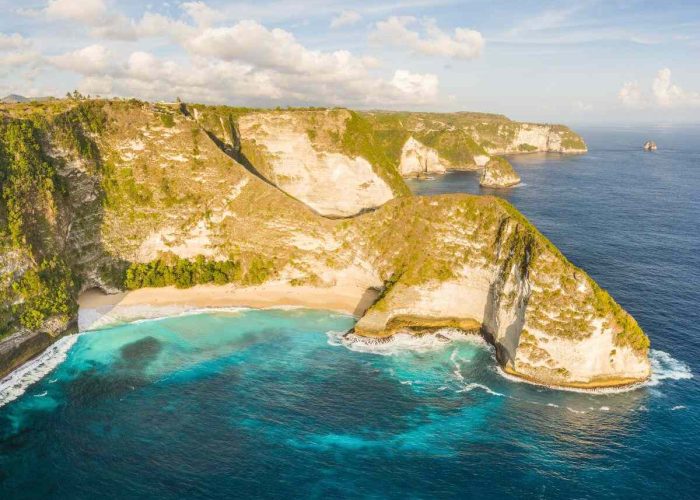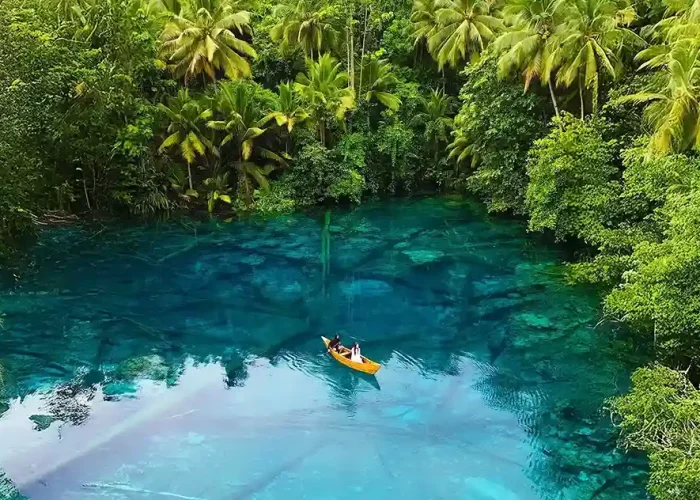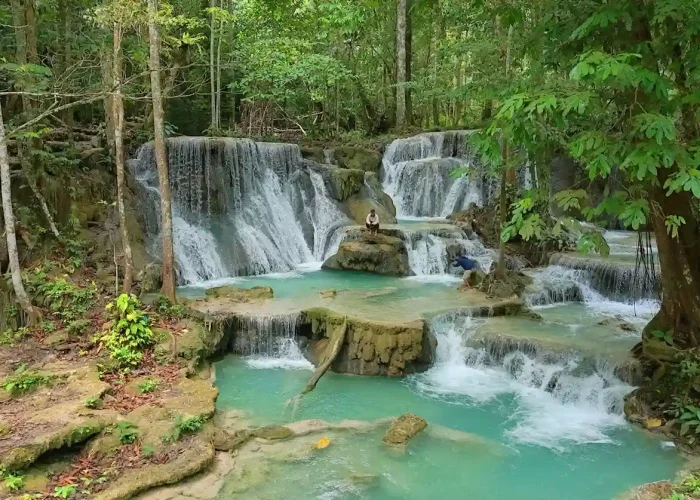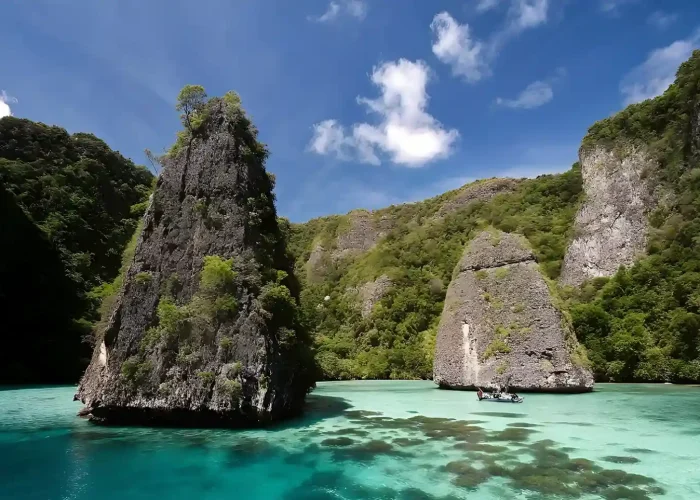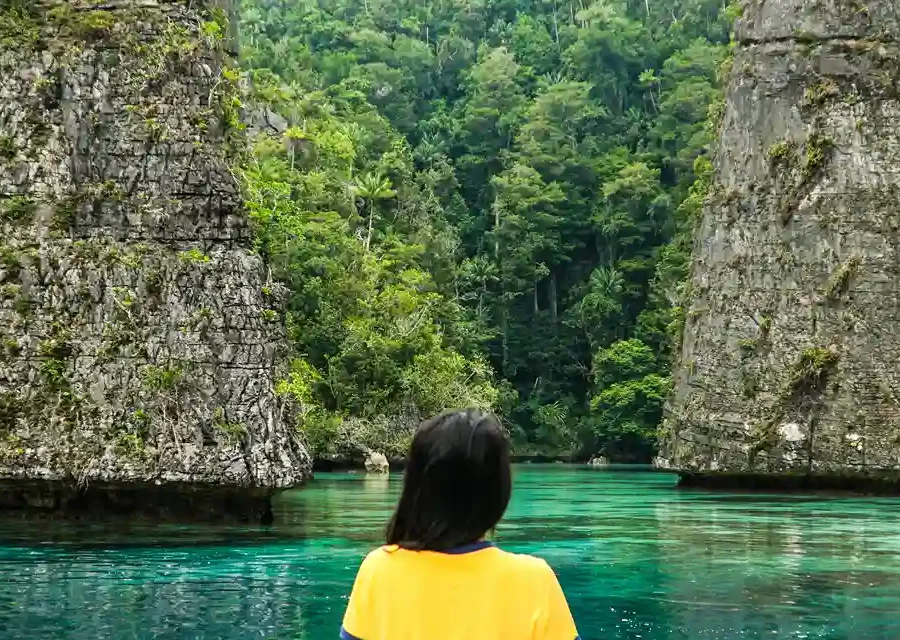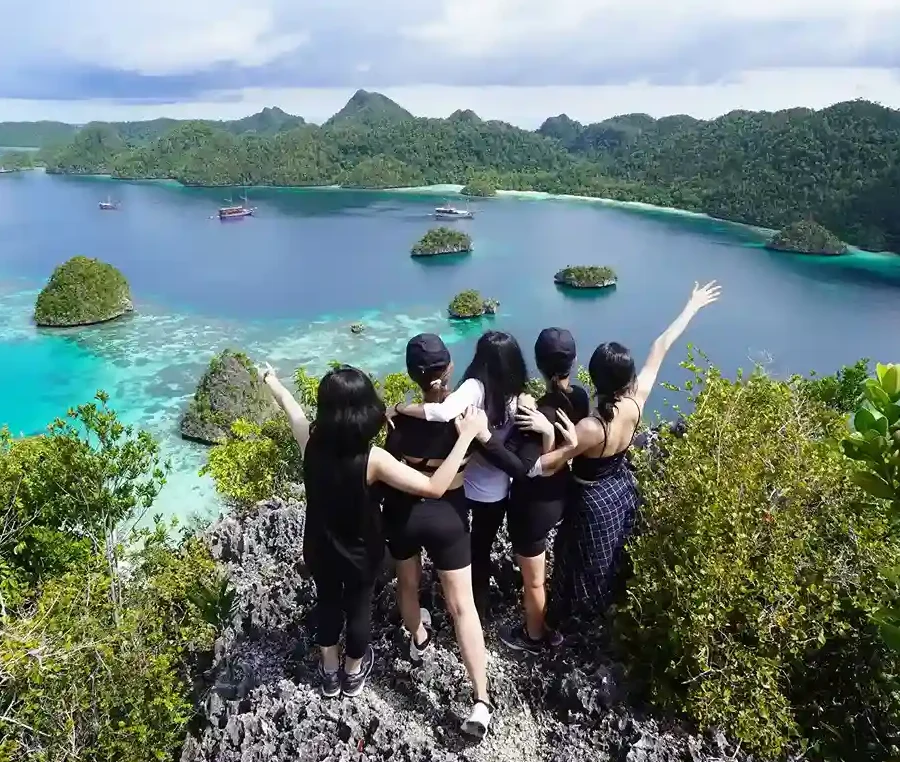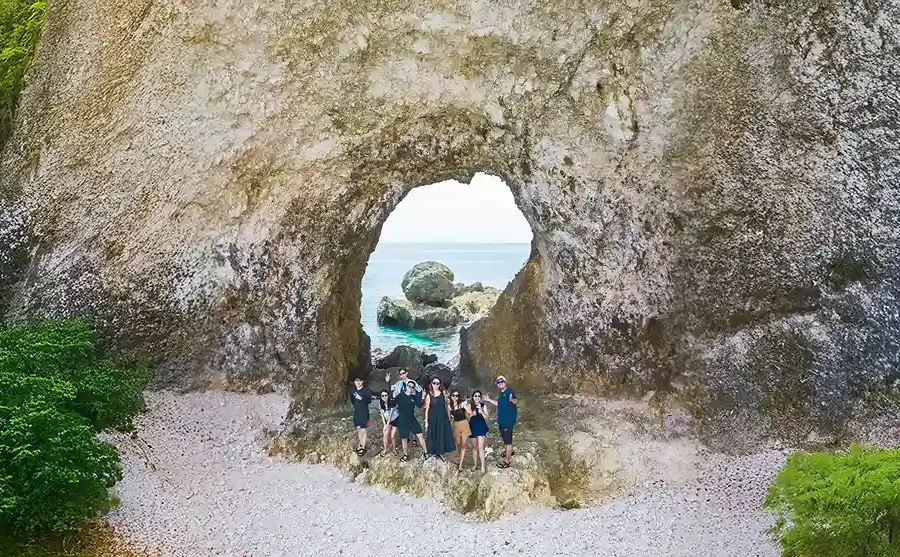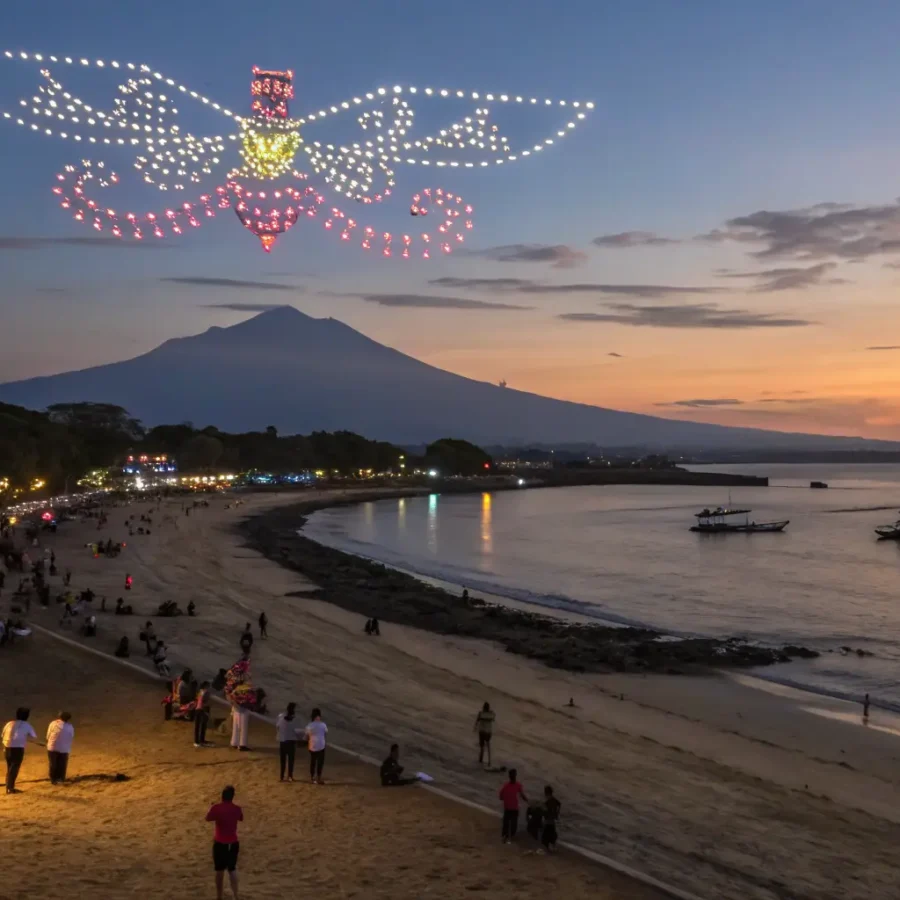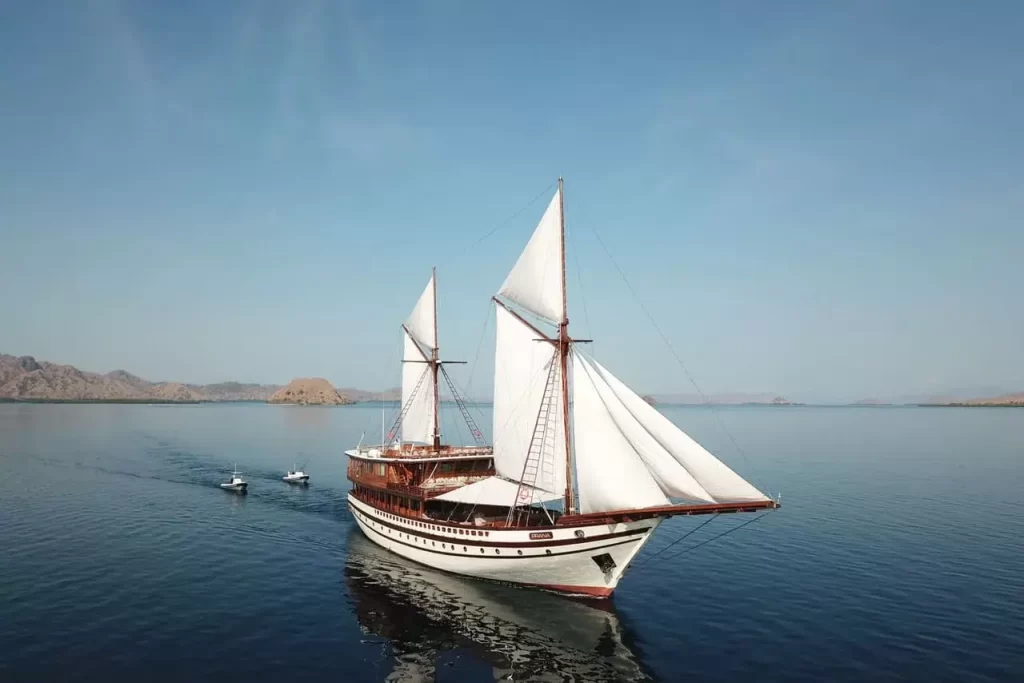Komodo dragons have always been one of Indonesia’s top tourist attractions. Beyond their size and looks, many people are curious about their abilities beyond land. One of the most asked questions is: can Komodo dragons swim?
This is rarely talked about, but it’s actually crucial for their survival. In this article, you’ll find scientific answers, fun facts about Komodo dragons’ swimming skills and tips on how to observe these ancient predators in their natural habitat. So get ready to get up close and see the amazing abilities of Indonesia’s prehistoric predator!
Table of Contents
Getting to Know Komodo: Indonesia’s Ancient Predator
Komodo dragons are ancient animals found only on a few islands in East Nusa Tenggara, such as Komodo Island, Rinca Island, Flores, and Gili Motang. With their big bodies, strong jaws and forked tongues, they are the top predators in their ecosystem.
Adult male Komodo dragons can reach up to 3 meters long, while females are slightly smaller, around 2.5 meters. They weigh between 70-90 kg and some of the biggest can even reach 136 kg. With this size, Komodo dragons are the biggest lizards in the world, with extraordinary strength to hunt and survive in the wild.
Can Komodo Dragons Swim?

Yes, Komodo dragons can swim. Their big bodies, combined with long tails and strong, muscular legs allow them to move efficiently in water. Komodo dragons use this swimming ability to move between islands, search for new prey or avoid threats. Swimming is not just an extra skill, it’s an essential survival strategy for their habitat across Indonesia’s islands.
How Far Can Komodo Dragons Swim?
Field observations show they are even known to swim across the ocean between the islands of the Komodo National Park up to 300 meters. With this skill, they can explore new territories, find more food sources or evade threats in their habitat. Moreover, this ability proves that Komodo dragons are truly adaptable in facing the challenges of Indonesia’s island environments.
How Long and How Enduring Are Komodo Dragons in Water?
In addition to distance, the length of time Komodo dragons can stay in water is also fascinating. Although their maximum duration is not precisely recorded, field studies indicate they can remain in water long enough to cross between islands. Remarkably, they can hold their breath underwater for up to 15 minutes. This shows they have remarkable stamina and physical strength, supporting their hunting and exploring abilities.
How Do Komodo Dragons Swim?
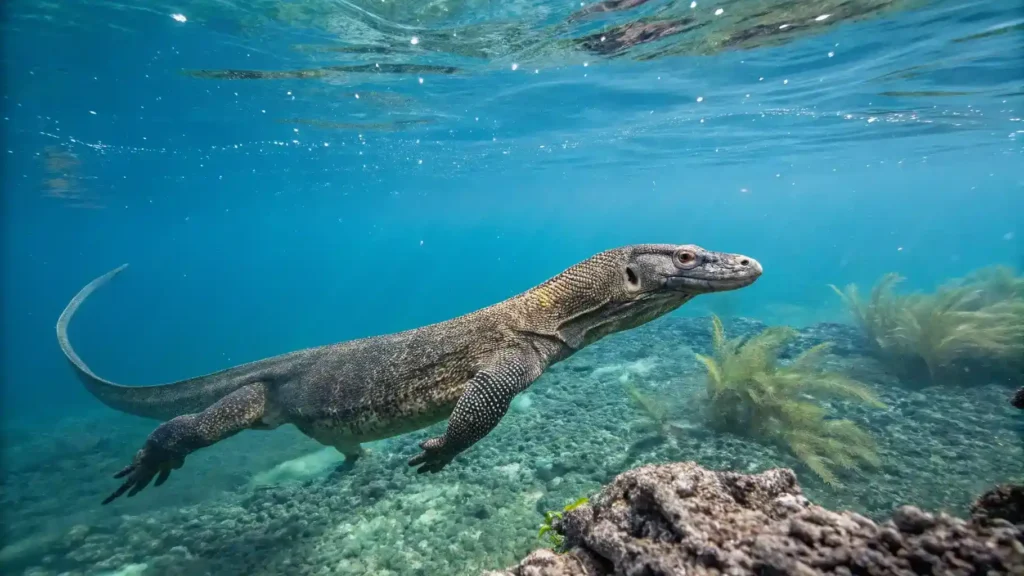
Komodo dragons have unique swimming features that set them apart from other reptiles. These ancient creatures use their long tails as the main propeller to push their large bodies through the water, while their strong legs help steer and maintain balance. You can imagine their movement as a small boat powered by natural paddles, showing how nature designed them to adapt across land and sea.
Despite their massive size, Komodo dragons are surprisingly good swimmers. They have been observed swimming across both shallow and deeper waters, covering long distances with steady strokes. Their ability as capable swimmers allows them to explore new islands, hunt for prey, or escape competition. This remarkable skill demonstrates that their survival strategies are not just about brute strength on land but also adaptability in water.
Swimming also highlights the resilience of these wild predators. Instead of relying solely on their powerful bites, Komodo dragons combine land hunting techniques with water mobility. In fact, during dry seasons or when food is scarce, they take advantage of being strong swimmers to search for resources elsewhere. This shows that for Komodo dragons, swimming is not just instinct, it’s a vital part of how they thrive in the wildlife of Komodo National Park.
Read more: Komodo Myths and Facts You Must Know!
Why Do Komodo Dragons Swim?

There are several reasons why Komodo dragons swim, all related to their ecology and survival:
- Moving Between Islands
East Nusa Tenggara consists of many small scattered islands. Swimming is crucial for Komodo dragons to explore other islands, find new territories, and access areas with more abundant food. This ability also helps maintain balanced populations across islands, keeping local ecosystems stable. - Hunting for Food
Beyond land hunting, Komodo dragons can use rivers or coastal waters to catch fish or small aquatic animals. Swimming gives them flexibility in hunting, allowing them to utilize more food sources and sustain their survival. - Regulating Body Health
Swimming or even simply soaking in water helps Komodo dragons cool down in hot weather and maintain the moisture of their sensitive skin. This natural behavior is essential for staying active and strong in hunting and exploration. - Avoiding Threats
Even as apex predators, Komodo dragons face risks, such as competition with other dragons or human disturbances. Swimming allows them to escape or move to safer locations, making it a key adaptive strategy for survival in the wild.
With these reasons, swimming is a significant part of their daily activities. So, if you visit their habitat, don’t be surprised to see Komodo dragons near water, soaking, or even crossing to another island in search of food or new territory. This ability truly shows how adaptive and intelligent these prehistoric Indonesian animals are.
Tips for Observing Komodo Dragons in the Wild
If you want to see Komodo dragons up close, including their swimming behavior, here are some tips to make your experience safe and enjoyable:
- Join a trusted tour – Choose official operators like IndonesiaJuara Trip for a safe and comfortable experience.
- Visit during the right season – The dry season, from April to December, is when Komodo dragons are more active near beaches and water edges.
- Keep a safe distance – Komodo dragons are apex predators. Never approach too closely, especially while they swim or hunt.
- Use local guides – Experienced guides know the best spots to observe Komodo dragons naturally without disturbing them.
- Bring a camera – Swimming behavior is rare to see, so be ready to capture these unique moments.
Following these tips ensures your visit is not only fun but also educational, helping you understand Komodo behavior and respect their natural habitat.
Read more: When Is the Best Time to See Komodo Dragons? Must-Know Info for Travelers!
Let’s See Komodo Dragons in Their Natural Habitat with IndonesiaJuara Trip!
After learning fascinating facts about Komodo dragons and their swimming abilities, you’re probably eager to see them in person. These ancient predators are not only land hunters but also highly adaptive animals. By joining a tour, you can witness Komodo dragons in their natural habitat while enjoying the stunning sea and island views.
For a safe, comfortable, and educational experience, consider joining the Labuan Bajo Tour with IndonesiaJuara Trip. The tour is guided by experienced local guides, allowing you to observe Komodo dragons safely while learning about their ecology and behavior. Don’t miss this rare opportunity to enjoy an unforgettable adventure and support the conservation of Komodo dragons in their natural environment.
